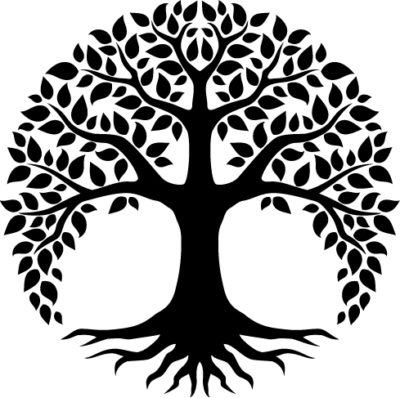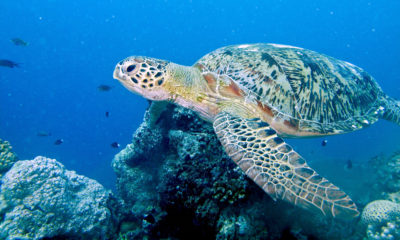by Richard William Nelson | Sep 20, 2013
 Geographical isolation is a driving force of speciation, hypothesized by Charles Darwin in The Origin of Species by means of natural selection. The emergence of new species is “chiefly grounded on the laws of geographical distribution, that forms now perfectly distinct [species] have descended from a single parent-form,” Darwin argued.
Geographical isolation is a driving force of speciation, hypothesized by Charles Darwin in The Origin of Species by means of natural selection. The emergence of new species is “chiefly grounded on the laws of geographical distribution, that forms now perfectly distinct [species] have descended from a single parent-form,” Darwin argued.
The University of California, Berkeley (UCB) Evolution 101 hosts the website page “Causes of Speciation.” Their argument for the theory is logical:
“Scientists think that geographic isolation is a common way for the process of speciation to begin: rivers change course, mountains rise, continents drift, organisms migrate, and what was once a continuous population is divided into two or more smaller populations.”
Continue Reading
by Richard William Nelson | Jul 5, 2013
 In December 1834, during the five-year voyage of the HMS Beagle, Charles Darwin described the colorings of an unusual frog on the temperate forest Island of Lemuy, Chiloe Archipelago, in his Beagle field notebook. Named in his honor, Rhinoderma darwinii, Darwin’s frog now faces extinction, not evolution.
In December 1834, during the five-year voyage of the HMS Beagle, Charles Darwin described the colorings of an unusual frog on the temperate forest Island of Lemuy, Chiloe Archipelago, in his Beagle field notebook. Named in his honor, Rhinoderma darwinii, Darwin’s frog now faces extinction, not evolution.
The only known sister Rhinoderma species, Rhinoderma rufum, was discovered by French zoologist André Marie Constant Duméril (1774 – 1860) in Argentina. In 2004, the International Union for Conservation of Nature (IUCN) listed R. rufum as “critically endangered” and R. darwinii as “vulnerable.”
Continue Reading
by Richard William Nelson | Jun 21, 2013
 The history of the evolutionary tree of life, from ancient Greek philosophers to twenty-first-century scientists, provides insights into the theory’s origin and its evolution through Western civilization.
The history of the evolutionary tree of life, from ancient Greek philosophers to twenty-first-century scientists, provides insights into the theory’s origin and its evolution through Western civilization.
While approaches have been diverse, elements that progress in increasing complexity over time are a constant theme.
Porphyry (234–305 BC), a third-century Greek philosopher, composed the first known tree of life in his work entitled Isagoge while living in Sicily. Isagoge is an “Introduction” by Porphyry edited into Aristotle‘s (384–322 BC) text known as Categories.
Continue Reading
by Richard William Nelson | Jun 14, 2013
 Charles Darwin started the debate over where humans originated. In the 19th century, most evolution scientists believed that humans originated in Asia — a theory known as the Out-of-Asia model. In the 6th Edition of The Origin of Species (1872), while Darwin mentions “humans” ten times, he never discusses the origin of humans.
Charles Darwin started the debate over where humans originated. In the 19th century, most evolution scientists believed that humans originated in Asia — a theory known as the Out-of-Asia model. In the 6th Edition of The Origin of Species (1872), while Darwin mentions “humans” ten times, he never discusses the origin of humans.
Darwin studied African apes for the 1st Edition of The Descent of Man (1871). In the section entitled “On the Birthplace and Antiquity of Man,” Darwin argued –
“It is somewhat more probable that our early progenitors lived on the African continent than elsewhere.”
Darwin started the Out-of-Africa vs. Out-of-Asia dilemma.
Continue Reading
by Richard William Nelson | May 11, 2013
 Embryology plays a critical role in Charles Darwin’s theory of evolution. The “leading facts in embryology … [were] second to none in importance,” he argued in The Origin of Species.
Embryology plays a critical role in Charles Darwin’s theory of evolution. The “leading facts in embryology … [were] second to none in importance,” he argued in The Origin of Species.
Illustrations of embryos by Ernst Haeckel, a German biologist, influenced Darwin. Haeckel’s drawings depict embryos repeating the steps of evolution, a concept known as the “ontogeny recapitulates phylogeny” theory.
It is believed that genes drive evolution through the process of natural selection. Since turtles have a unique body plan, studying the turtle genome during embryonic development is expected to give insight into their origin.
Continue Reading
 Geographical isolation is a driving force of speciation, hypothesized by Charles Darwin in The Origin of Species by means of natural selection. The emergence of new species is “chiefly grounded on the laws of geographical distribution, that forms now perfectly distinct [species] have descended from a single parent-form,” Darwin argued.
Geographical isolation is a driving force of speciation, hypothesized by Charles Darwin in The Origin of Species by means of natural selection. The emergence of new species is “chiefly grounded on the laws of geographical distribution, that forms now perfectly distinct [species] have descended from a single parent-form,” Darwin argued.
 In December 1834, during the five-year voyage of the
In December 1834, during the five-year voyage of the  The history of the evolutionary tree of life, from ancient Greek philosophers to twenty-first-century scientists, provides insights into the theory’s origin and its evolution through Western civilization.
The history of the evolutionary tree of life, from ancient Greek philosophers to twenty-first-century scientists, provides insights into the theory’s origin and its evolution through Western civilization. Charles Darwin started the debate over where humans originated. In the 19th century, most evolution scientists believed that humans originated in Asia — a theory known as the
Charles Darwin started the debate over where humans originated. In the 19th century, most evolution scientists believed that humans originated in Asia — a theory known as the  Embryology plays a critical role in
Embryology plays a critical role in 